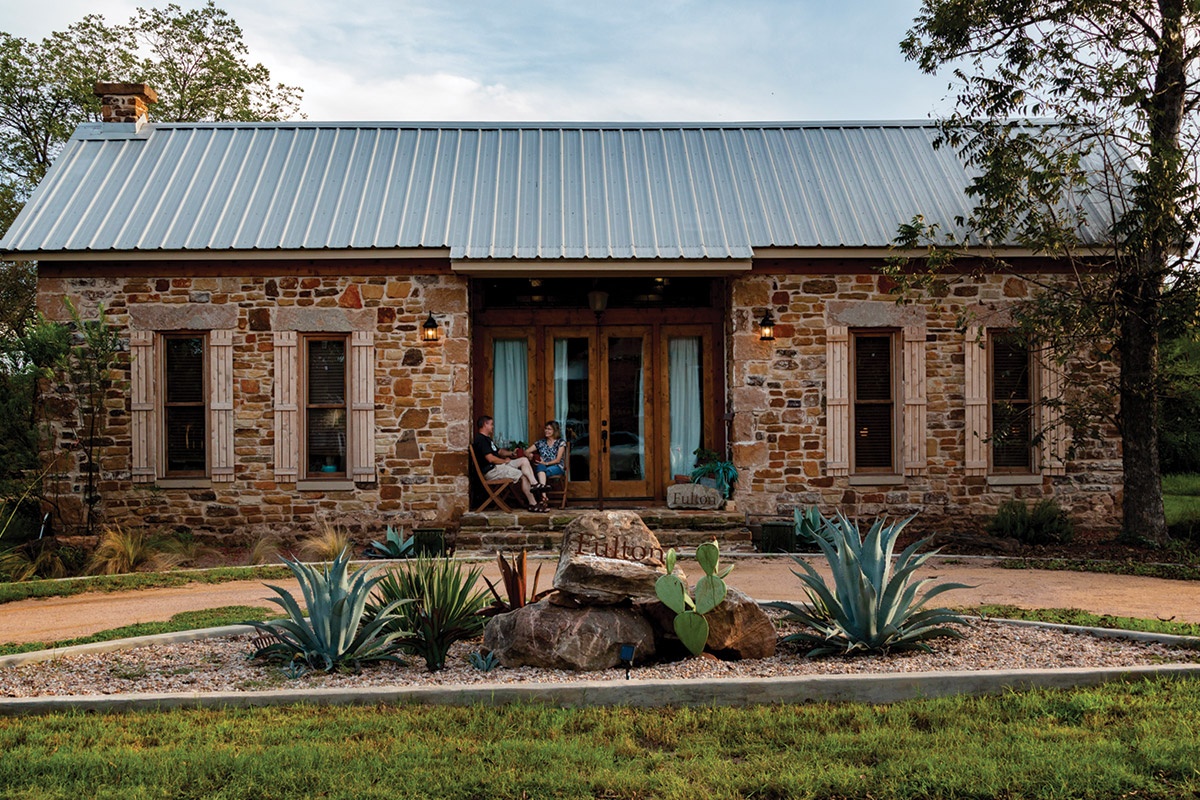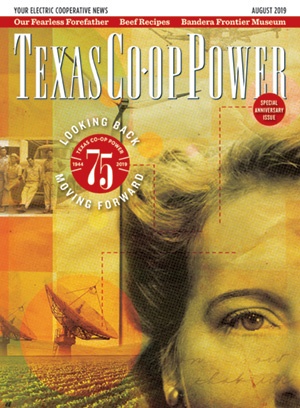“The place was nasty,” recalls Shannon Worrell. “The electricity had been turned off, so animal carcasses left in freezers smelled awful. Trash was everywhere.”
It was a chilly day in December 2015, and Worrell was touring a rambling, one-story condemned building she owned two blocks from the charming historic square in Mason, about 100 miles west of Austin. She and Mason city administrator John Palacio entered the building with the intention of confirming plans for the structure’s demolition.
“But before we tore it all down,” Worrell says, “I wanted to see what I could salvage for future projects. In one narrow hallway, we used our cellphone flashlights to look. That’s when we saw a big rock set over a doorway.”
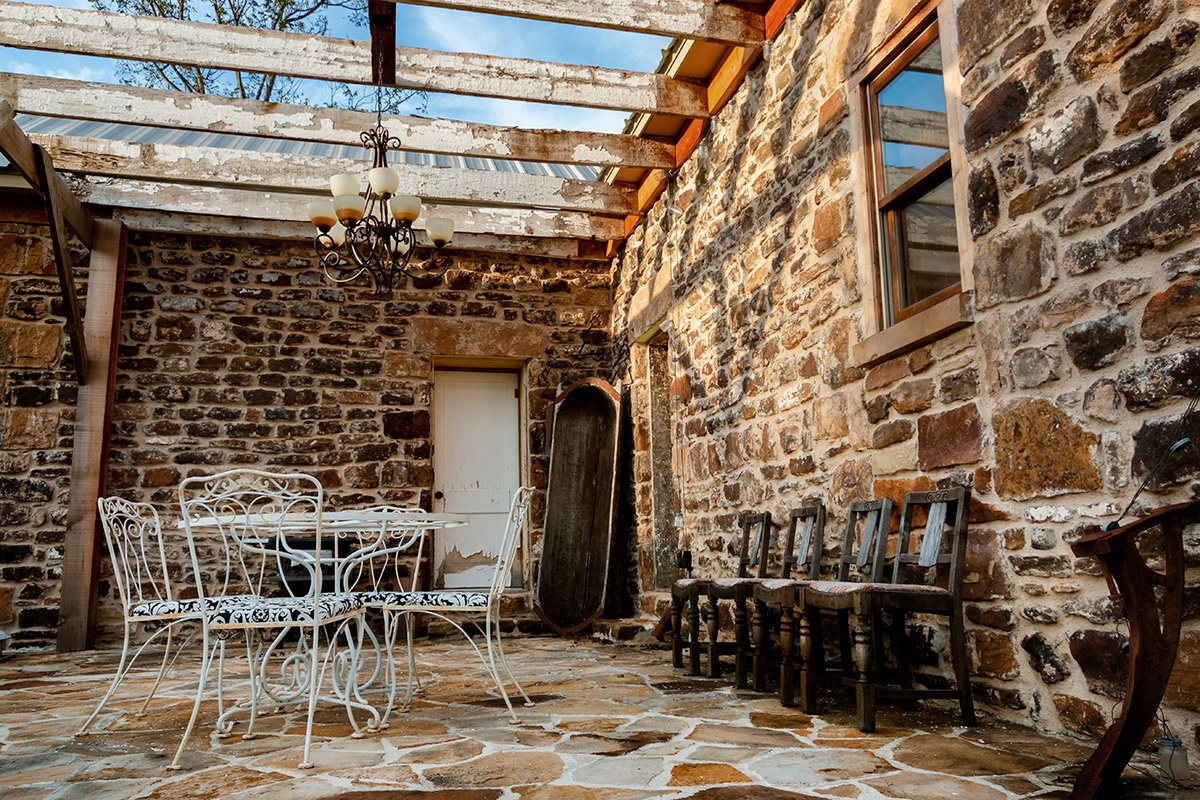
Web Extra: The back patio is open for guests to relax and take in the Texas sky.
Chris Salazar | TEC
The rock turned out to be a hand-hewn stone lintel laid across a window opening. Another lintel and window came to light as she and Palacio picked their way through debris. They also uncovered thick rock walls. “You know,” Palacio said, “rumor has it that there used to be a rock house here.”
The rumor proved true. But could the original rock building, hidden underneath generations of additions and renovations, be reclaimed?
When Worrell and Palacio inspected the condemned building, barren ground and broken-down vehicles fronted the ramshackle hodgepodge. The structure had served as a well-respected nursing home from the late 1950s until the 1980s. To accommodate more patients, the owner built on rooms and attached two small houses until the facility reached 10,000 square feet.
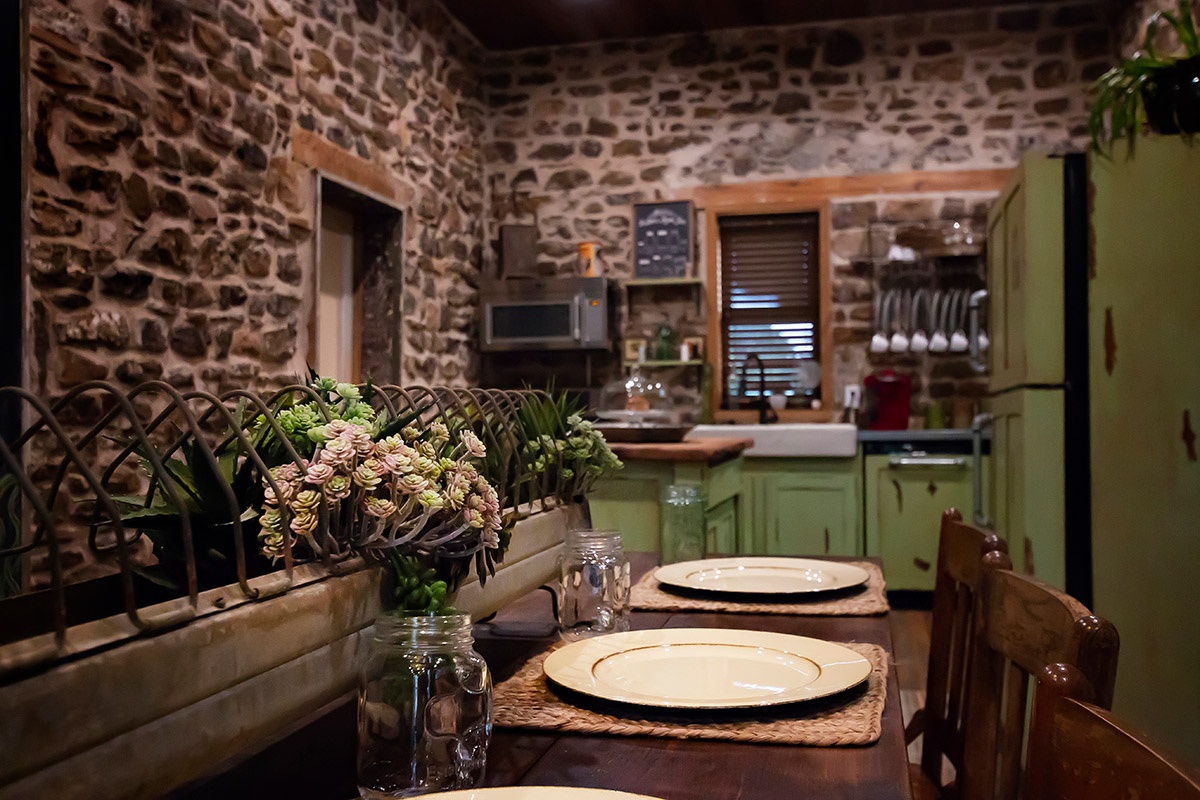
Web Extra: At the heart of the Fulton Guesthouse bed-and-breakfast lies a dining hall and full, modernized kitchen.
Chris Salazar | TEC
After the facility closed, Mason resident Oliver Grote bought the property and leased it. After his death in 2011, the property passed to his son, Glen, who sold it. The new owner operated a taxidermy shop in the building and lived in the back. She defaulted on the loan and abandoned the property. The building, with animal carcasses in the abandoned freezers, reverted to Grote.
By this point, the neighbors were complaining. Citing the city’s nuisance ordinance, Mason officials ordered Grote to demolish it. He offered to gift the real estate to his daughter, Worrell, a real estate investor and member of Central Texas EC, provided that she handled the legalities. She declined but then reconsidered, deciding to take the property and tear the building down.
On the day they inspected the structure, Palacio and Worrell chipped away enough drywall to reveal the remnants of a dogtrot home concealed within the more recent structure. Worrell got the city’s OK to halt demolition.
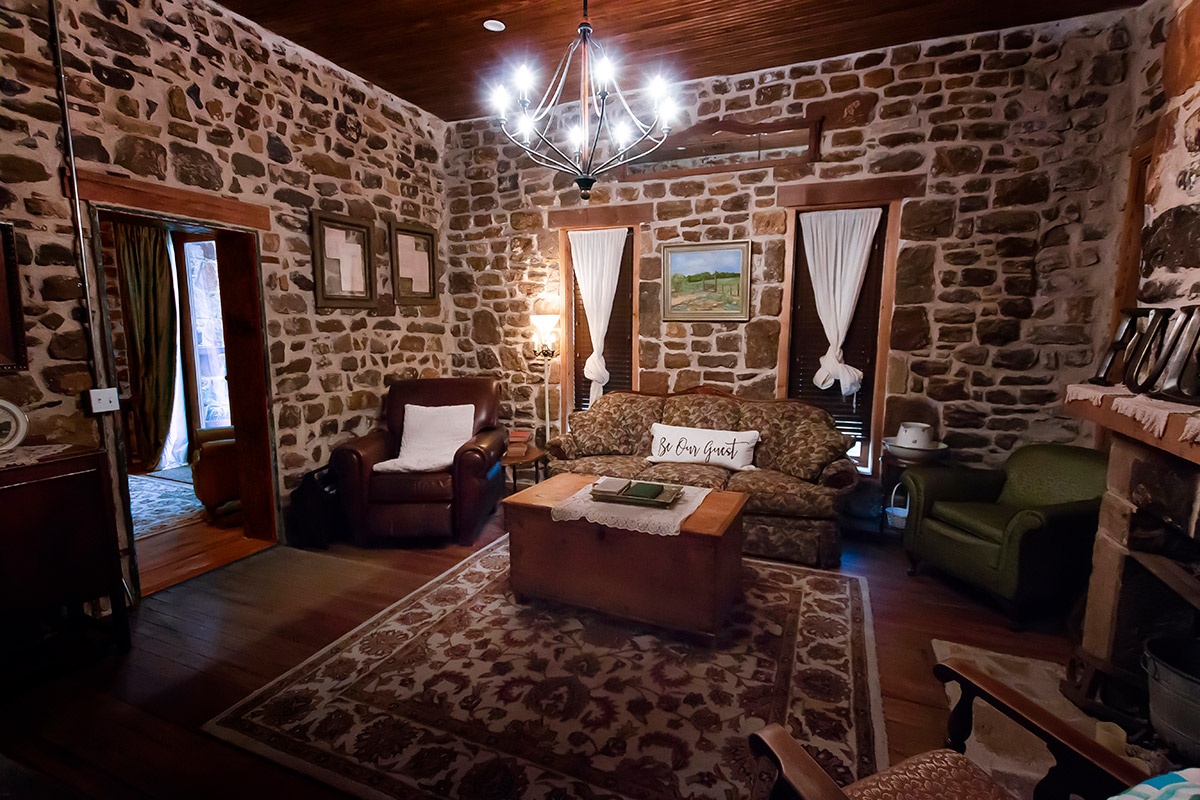
Web Extra: The cozy living room offers a fireplace and ample seating.
Chris Salazar | TEC
For two weeks, three workers operating an excavator and two dump trucks hauled away 15 loads of trash and demolished add-ons. Finally, just the original rock house remained. From there, Worrell and her renovation crew worked by hand.
“We were very slow and methodical as we took the house apart and restored it, section by section,” Worrell says. “We peeled away sheetrock, paneling and plaster from walls. We removed carpeting, linoleum and wooden floors to reveal the original longleaf pine floors. We chinked out the old lime from the rock walls and put in new cement. We had to rebuild the front walls because they’d been removed to expand the nursing home. But we found matching native rocks and put back the original window lintels.”
Beadboard ceilings and a sleeping porch were too deteriorated to save. In their place, Worrell used salvaged beadboard from an 1860s house and added a modern bathroom and utility room. By fall 2016, she’d transformed the condemned building into the Fulton Guesthouse.
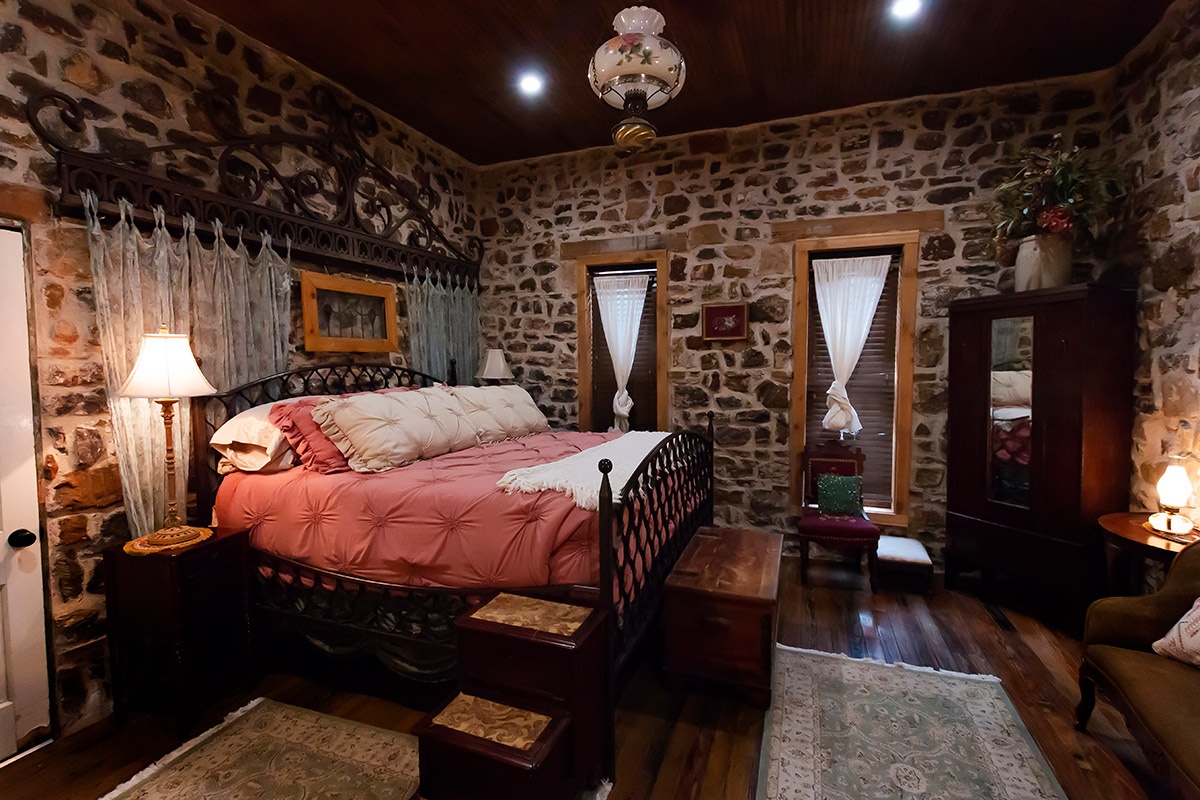
Web Extra: The master bedroom. The house also includes a bunk room for extra guests.
Chris Salazar | TEC
Above the fireplace mantel, scorched by flames, a portrait showcases original owner William Zesch and his second wife, Pearl. In a binder, guests can read of the house’s history, starting when Zesch bought the lot from Marshall Fulton in 1898 for $400.
Using native sandstone, Zesch built the modest rock house for his first wife, Carie, who died in 1900. A year later, Zesch married Pearl. According to the Mason County Historical Book, Zesch built an icehouse and electric power plant on the property. In 1946, Zesch moved out of the home.
Fulton Guesthouse is a farm-style sandstone home with oak-framed windows, glass doors and a metal roof. On the rock porch, a bistro table and two chairs offer a view of the front yard and circular drive, landscaped with yuccas, prickly pear, bunch grasses and boulders. Inside, the two-bedroom home is furnished with antiques, a full kitchen and modern conveniences. At first glance, you’d never guess that the house was previously a tumble-down wreck packed with hoarded junk.
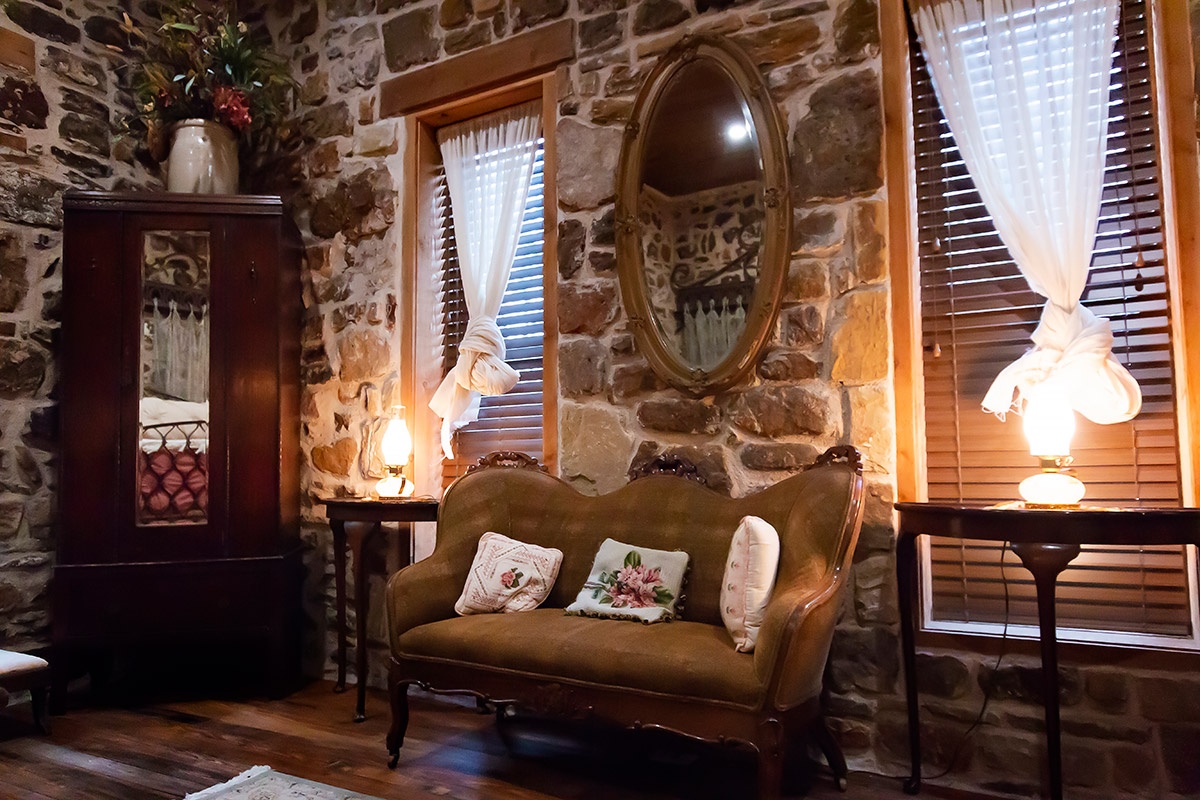
Web Extra: The Fulton Guesthouse features vintage furniture throughout.
Chris Salazar | TEC
While restoring the Zesch home, Worrell uncovered another surprise. In a box of family memorabilia, she came upon Zesch’s original 1898 property deed. A copy of the fragile paperwork, framed in glass, hangs on a rock wall in the Fulton Guesthouse.
“This place is a piece of Mason’s history that I didn’t want to lose,” Worrell says. “The house told us what to do because the bones were already there. We just had to put it all back together. And we did.”
Sheryl Smith-Rodgers, a member of Pedernales EC, lives in Blanco.
